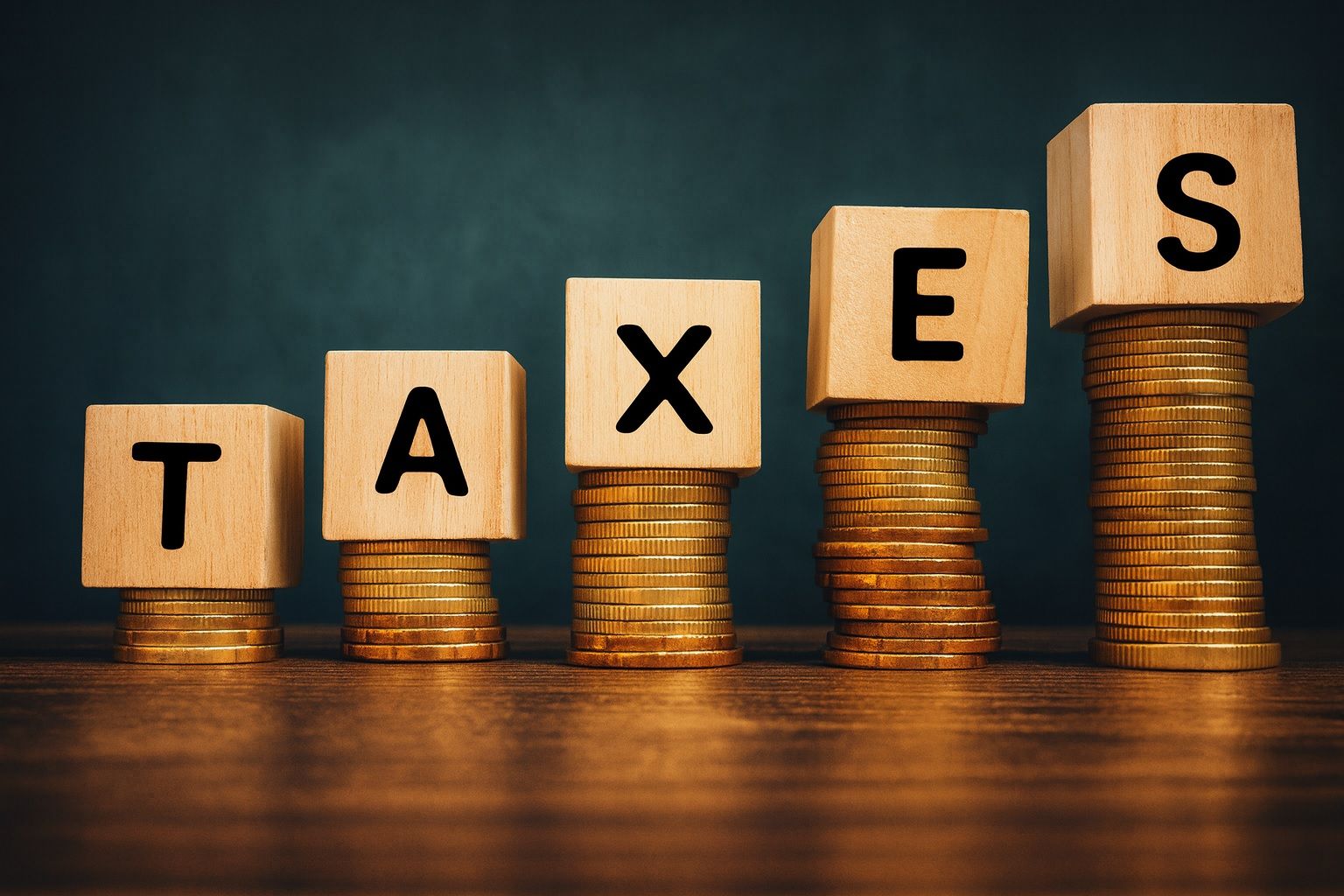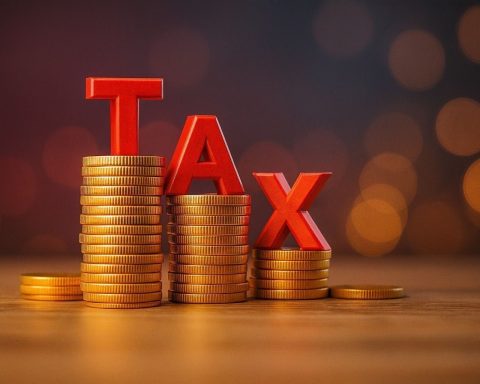Key Facts: As Congress’s funding lapse hit IRS operations in late Oct 2025, most paper refunds were paused (e-filers still get refunds) [1]. The IRS paid out $311.6 billion in refunds in 2025 (up slightly) with an average of $3,052 per taxpayer [2]. The new U.S. tax law (the “One Big Beautiful Bill” of July 2025) raised credits for children and seniors [3], and analysts now forecast a surge in refunds (an extra ~$50 billion, or +18%) in early 2026 [4] [5]. In state news, Virginia announced one-time income-tax rebates of $200–$400 from a budget surplus [6]. Abroad, India reports delays in processing large refunds (nearly 1.9 crore returns pending as of late Sept) [7], while Taiwan is issuing a NT$10,000 (≈$300) “universal” cash payment to citizens (framed as a tax refund) [8] [9]. Stock markets have rallied on tax-season optimism: tax-prep firms like H&R Block and Intuit are near multi-year highs (HRB ~$50.8, INTU ~$678) [10] [11].
U.S. Refund Season and Policy Updates
Late October brought a mixed picture in the U.S. tax-refund landscape. The IRS reported that by Oct. 17 it had issued 102.1 million refunds (down ~1% vs. last year) totaling $311.6 billion [12]. Despite a slight drop in check counts, the average refund edged up to about $3,052 (roughly $48 more than 2024’s average) [13]. The agency credits this uptick to the new “One Big, Beautiful Bill” Act (OBBBA), signed July 2025, which restored and expanded parts of the 2017 tax cuts. For example, the Child Tax Credit rose to $2,200 per child and seniors received a new $6,000 deduction [14]. These changes mean many filers are paying more tax during the year (with unchanged payroll withholding), then getting larger refunds when they file next spring. As one tax expert noted, “the 2025 tax changes dwarf anything I’ve seen in 40 years,” especially because many benefits take the form of deductions rather than credits [15] [16].
Despite the new law’s boost to refunds, IRS service was partially disrupted by a federal funding lapse in late October. An IRS announcement on Oct. 21 confirmed “limited operations” due to the shutdown [17]. In practice, refunds were “generally not paid during this period with one key exception”: returns filed electronically, error-free, and with direct deposit will still be processed [18]. In other words, taxpayers who e-file and choose bank deposit should get their checks, but paper-filers will face delays until funding is restored. (Officials encouraged everyone to e-file and use direct deposit when possible [19].) This aligns with reports that the IRS is phasing out paper checks altogether and urging taxpayers to go digital. In fact, 93% of 2025 refunds were already direct-deposited [20], a trend that is accelerating to prevent future shutdown disruptions.
Tax professionals see both opportunity and risk in the refund shuffle. Nancy Vanden Houten of Oxford Economics points out that many Americans will effectively “pay too much in tax this year and see larger refunds” later [21]. In an October analysis, she estimated U.S. taxpayers could receive roughly $50 billion more in refunds (or tax cuts) due to the new law – an 18% jump over the previous year [22]. This means the average refund may swell significantly, though much of the extra benefit will flow to higher-income households (thanks to deductions like the new SALT cap [23]). JPMorgan’s David Kelly likewise warns of a “tax-refund surge” akin to a hidden stimulus, estimating the average refund could reach about $3,743 in 2026 (versus $3,186 last year) [24] [25]. He notes this influx of cash could spur consumer spending – like a mini–stimulus check for the economy – but also risks fueling inflation as higher tariffs raise consumer costs [26].
State Rebates and One-Time Checks
Some U.S. states are taking advantage of budget surpluses to issue one-time rebates. Notably, Virginia announced that anyone who owed 2024 state income tax will get a rebate of up to $200 (individual) or $400 (joint) [27]. These checks go out on a rolling basis (returns filed by July 2025 were paid by mid-October) [28]. Virginia’s Democrat-led legislature inserted this $1 billion rebate into a bipartisan budget after rejecting Gov. Youngkin’s other proposals [29]. The governor and supporters say it’s simply giving taxpayers “their own money” back after years of $10 billion in revenue surpluses [30]. Critics, however, note low-income residents get little from a non-refundable rebate (for example, single filers with a $50 tax bill only get $50 back) [31].
Elsewhere, some states have delayed or scaled back refunds. For instance, the Tennessee state revenue department recently announced changes to sales tax refund schedules (for overpayments), but specifics are still emerging. On the political front, speculation about a new federal “stimulus check” faded in October: Congress did not approve any late-2025 rebate package, and tax officials have confirmed no surprise checks are coming [32].
Europe & UK: Limited Rebate News, VAT Reforms
Across the Atlantic, no major one-time tax rebates for consumers have been announced. In the UK, Chancellor Rachel Reeves hinted only at future tax changes in the upcoming 2025 budget, without mentioning any payback checks. Instead, tax agencies are focusing on backlogs and digital services. For example, the UK Student Loans Company reports over 1.1 million customers have already used its new online refund service for loan over-payments [33] [34] – a sign of the UK’s push toward digital refunds, though this is specific to student loans, not income tax. Industry commentators warn that HMRC (the UK tax agency) still faces significant backlogs. A recent adviser note even cautioned that many UK self-assessment refunds filed after mid-2025 might not be processed until late autumn, with some taxpayers waiting many months. (HMRC has introduced tools to estimate reply times, but no official timeline has been given.)
In the broader EU, individual taxpayers typically don’t receive government checks but may claim refunds through year-end filings. Several EU countries are instead tweaking tax rules: for example, Belgium postponed a planned overhaul of its VAT-refund system that was due Oct. 1, 2025 [35]. Under the delayed plan, businesses expecting lump-sum VAT refunds on accumulated credit balances will now wait; authorities said the delay was strategic to ensure a “smooth transition” [36]. Meanwhile, some European governments still face huge past-due rebates: Spain (for instance) is urging pensioners to check if they can reclaim earlier overpaid taxes, while Italy recently standardized faster VAT refunds for exporters to support businesses (affecting traders rather than households). But for ordinary consumers, the message in Europe is steady on pre-set tax refunds and credits – no surprise rebates are in view.
Asia-Pacific: Mixed Signals
In Asia, tax-refund developments vary by country. India is in the midst of its income-tax filing season (deadline Nov. 30, 2025) and news reports highlight processing delays, especially for large refunds. According to an Economic Times analysis, by Sept 23 some 7.57 crore (75.7 million) returns were filed, with about 5.01 crore processed and 1.86 crore still pending [37]. Chartered accountants say big refund claims often trigger extra scrutiny, slowing issuance. As one expert put it, “Delays are not always about the refund amount” – many small refunds (under ₹10,000) went out immediately, but many returns filed after mid-July remain unpaid [38]. The tax department has said eligible taxpayers will get interest on late refunds, but long waits are causing frustration. No new one-time rebates are on the table, but businesses in India do receive regular GST (VAT) refunds as part of export incentives.
Further east, Taiwan recently approved a second “universal” cash payment to all citizens by Oct. 31, 2025 – effectively a broad tax rebate. Legislators agreed to distribute NT$10,000 (about $300) per person from budget surpluses (versus NT$6,000 in 2023) [39]. The payment is funded by excess tax revenues and a cut to an electricity subsidy, and was hotly debated in Taipei. Supporters have framed it as “shared prosperity” or a one-off tax refund to citizens [40]. The timing (just before elections) and size have stirred talk of “buying votes”, but officials note it’s essentially redistributing surplus public funds.
In Vietnam, the government is using tax incentives to boost specific industries. In early October, the Ministry of Finance proposed special tax refunds on mineral gasoline for biofuel producers, aiming to meet a new E10 ethanol mandate. Under the plan, firms blending bio-ethanol into petrol could claim back certain consumption taxes [41]. This targeted refund is intended to help domestic ethanol output, but it’s a business measure, not a household rebate. Other Asia-Pacific governments (e.g. Australia, Japan) have no large refund campaigns underway; they are more focused on broader tax relief or new tax thresholds than on issuing refund checks.
Market Reaction and Stock Impact
Tax-refund news has had a noticeable effect on related stocks. In the U.S., tax-preparation and financial-service companies have rallied on strong tax-season demand and policy tailwinds. H&R Block (NYSE: HRB) reported higher Q1 bookings and saw its stock tick up about 2–3% in October on the refund buzz. By Oct. 30 its share price was about $50.79 [42], near the midpoint of its 52-week range. Intuit Inc. (NASDAQ: INTU), the maker of TurboTax, likewise enjoyed a run-up. Late Oct. data shows INTU at roughly $678 [43], off its summer lows and approaching post–earnings highs. Intuit is expected to benefit from more filers using paid software to claim larger credits. (By contrast, rumor-driven stocks, like niche tax-product vendors, saw only modest movements.)
Broad markets haven’t swung dramatically on tax news alone. October 2025 saw mixed equity performance as investors weighed Fed signals and earnings, with the S&P 500 roughly flat for the month. However, analysts note that any consumer spending boost from larger refunds could feed into holiday retail sales. Financial stocks (banks and lenders) also keep an eye on refunds: big refunds can boost savings or deposit inflows, though they often get spent quickly. If refund checks translate into higher credit card spending or loan paydowns, that indirectly affects financial firms’ Q4 results.
In the UK and Europe, the market impact has been muted. No surprise rebates means consumer sentiment hasn’t spiked. UK banks and retailers are watching household finances closely, but most focus is on energy prices and wages. In Asia, stock reactions are localized – for example, Japanese beverage makers sometimes see a bump when government cash handouts arrive, but there were no national payouts this fall. Vietnam’s top fuel and ethanol companies may benefit if the biofuel tax refund plan passes, but that story is still unfolding.
Outlook: Consumers, Budgets and Spending
Looking ahead, the big question is how these tax refunds (or lack thereof) will affect economies and budgets. In the U.S., the consensus is that taxpayer wallets get a boost in early 2026. The IRS and analysts expect a flood of refunds starting Feb–Apr 2026 as workers claim the full effect of the 2025 tax cuts. This “windfall” of cash is likely to be partly spent, providing a lift to consumer spending in Q1/Q2 2026 [44]. JPMorgan’s forecast warned that this could rekindle inflationary pressures if supply remains tight, especially since costs for goods are also rising under higher import taxes [45]. Retailers will be watching cautiously: last year’s refunds coincided with a modest sales uptick, but household budgets also face headwinds from higher prices.
For governments, larger refunds mean less net tax revenue or more outlays. The $50B figure from Oxford Economics (CBS News) effectively adds $50B to the 2025 budget deficit (or reduces 2026 revenue) [46]. CBO projections and Treasury reports will soon factor in these changes; early indications are that the 2025 tax law stabilizes revenues through 2026 but leaves them higher from 2027 onward [47]. In plain terms, policymakers may have to tighten budgets later or roll back some cuts to keep deficits in check. Some legislators have already eyed offsetting measures (e.g. future credit re-phasing, or new taxes) in their fall planning.
Tax experts advise caution. Tax attorney Mark Steber (via TS2) warns that while refunds are up, the paperwork is only getting more complex [48]. He urges filers to check eligibility carefully so they don’t miss credits. In India, chartered accountants like Tarun Madaan recommend that taxpayers be patient but vigilant – ensure bank details are correct and respond promptly to any e-filing notices, to avoid additional delays [49]. In general, taxpayers should prepare for a bump in refunds (or lower 2026 tax bills) but also for the usual fine-print and potential audits that come with tax changes.
Overall, as of Oct 30, 2025 the global story is mixed: the U.S. and some local governments are giving money back via larger refunds or rebates, while others simply process filings at their own pace. Stock markets have taken the news in stride, and economists are closely watching how the extra cash translates into spending. Consumers should check their refund status (most tax agencies now offer online portals) and spend the windfall wisely – once it arrives.
Sources: Official government statements and financial filings (IRS, HMRC, state revenue docs), TS2.Tech analysis [50] [51], news outlets (CBS, Economic Times, Sky News), and analysts’ forecasts [52] [53] [54] [55]. All data is current as of late Oct 2025.
References
1. www.irs.gov, 2. ts2.tech, 3. ts2.tech, 4. www.cbsnews.com, 5. economictimes.indiatimes.com, 6. ts2.tech, 7. economictimes.indiatimes.com, 8. basicincome.org, 9. basicincome.org, 10. www.reuters.com, 11. www.reuters.com, 12. ts2.tech, 13. ts2.tech, 14. ts2.tech, 15. ts2.tech, 16. economictimes.indiatimes.com, 17. www.irs.gov, 18. www.irs.gov, 19. www.irs.gov, 20. ts2.tech, 21. www.cbsnews.com, 22. www.cbsnews.com, 23. www.cbsnews.com, 24. economictimes.indiatimes.com, 25. economictimes.indiatimes.com, 26. economictimes.indiatimes.com, 27. ts2.tech, 28. ts2.tech, 29. ts2.tech, 30. ts2.tech, 31. ts2.tech, 32. ts2.tech, 33. www.gov.uk, 34. www.gov.uk, 35. www.fidelium.eu, 36. www.fidelium.eu, 37. economictimes.indiatimes.com, 38. economictimes.indiatimes.com, 39. basicincome.org, 40. basicincome.org, 41. www.spglobal.com, 42. www.reuters.com, 43. www.reuters.com, 44. economictimes.indiatimes.com, 45. economictimes.indiatimes.com, 46. www.cbsnews.com, 47. www.cbsnews.com, 48. ts2.tech, 49. economictimes.indiatimes.com, 50. ts2.tech, 51. ts2.tech, 52. economictimes.indiatimes.com, 53. www.cbsnews.com, 54. economictimes.indiatimes.com, 55. basicincome.org









